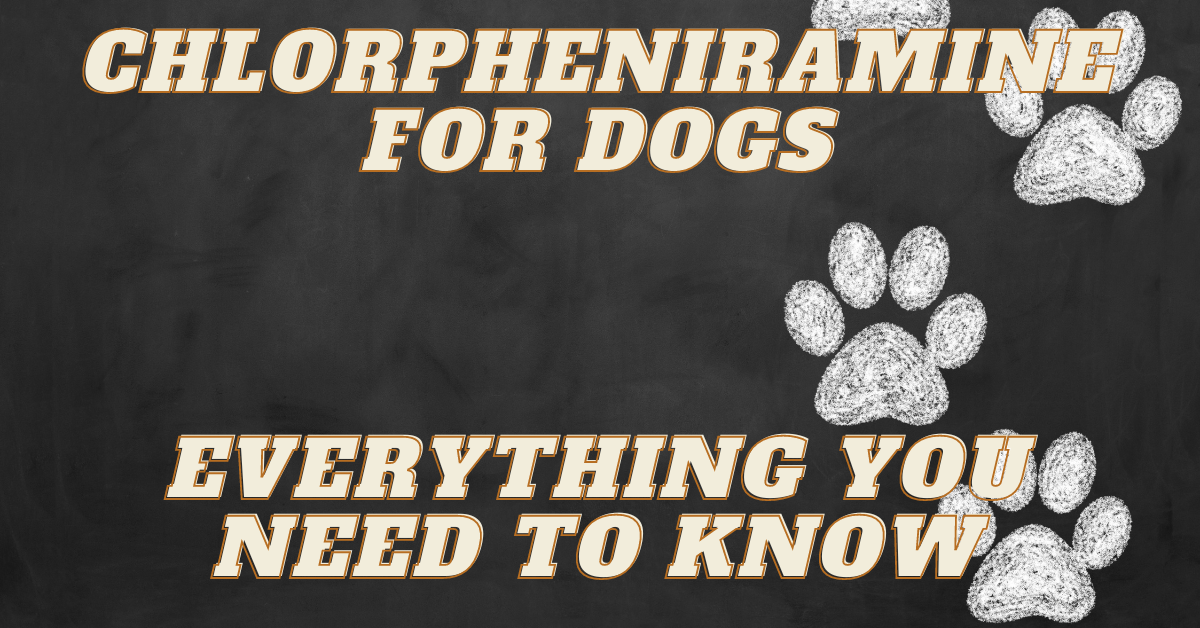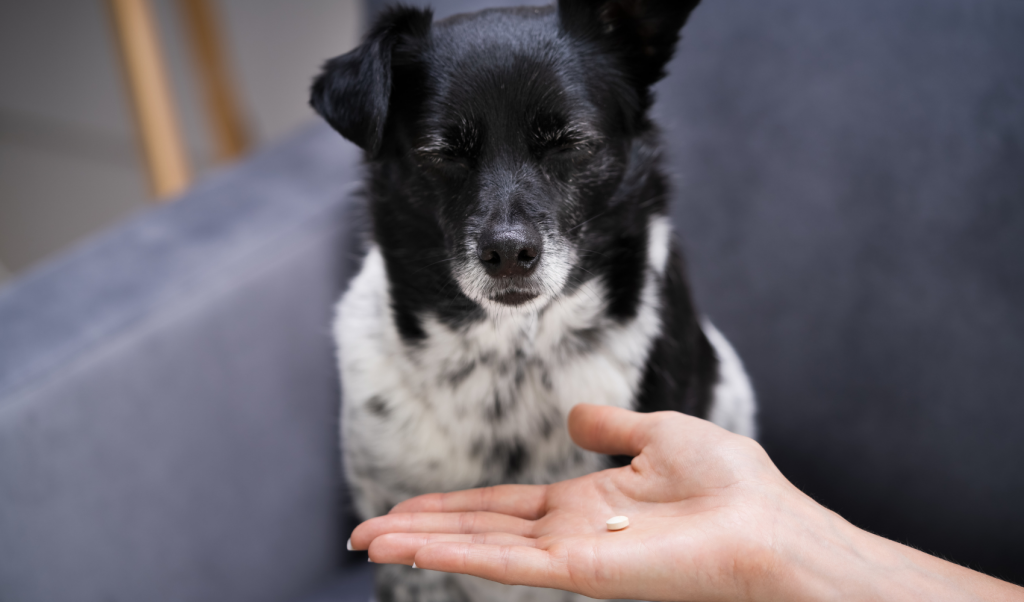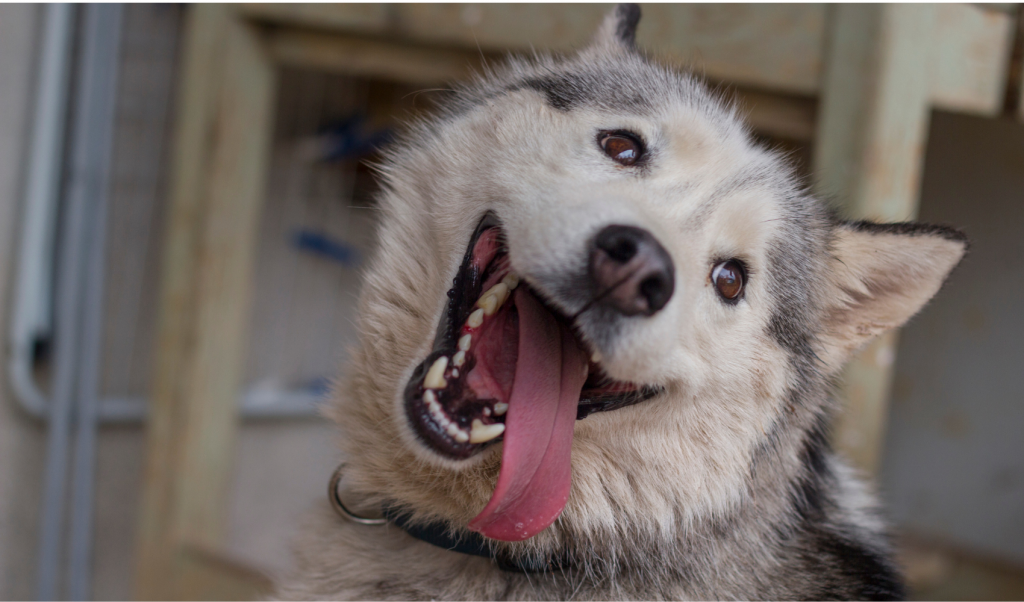





Chlorpheniramine belongs to the antihistamine class of drugs that helps to treat allergy-related conditions in dogs. Skin allergy, i.e., pruritis and motion sickness, are at the top of the list to show relief from chlorpheniramine for dogs.
It is categorized in the first-generation antihistamine group that helps to alleviate itchiness and swelling caused by inflammation.
The FDA does not currently approve Chlorpheniramine specifically for veterinary use, but the medication does show tremendous results in mitigating certain allergies in dogs. However, we do recommend an expert vet monitors its administration.
If you’d like to know more about home medications that can help your pet, check out our vet-approved list below.
| Dyne for Dogs: For Energy & Weight Gain | Omeprazole for Dogs: For Ulcers & Inflammation | Enrofloxacin for Dogs: For Bacterial Infections |
Cefpodoxime for Dogs: For Bacterial Infections | Sucralfate for Dogs: Chronic Upset Stomach | Cosequin for Dogs: For Joint Health |
| Ursodiol for Dogs: For Liver & Gallbladder | Trazodone for Dogs: For Anxiety & Aggression | Mometamax for Dogs: For Ear Infections |
| Credelio for Dogs: For Ticks & Fleas | Chlorpheniramine for Dogs: For Allergy-Related Conditions | Butorphanol for Dogs: For Painful Coughs |
| Dinovite for Dogs: For Irritating, Itchy Coat | Dasuquin for Dogs: For Joint Health | Meloxidyl for Dogs: For Pain & Inflammation |
| Glandex for Dogs: For Digestive Support | Rilexine for Dogs: For Bacterial Infections | Enalapril for Dogs: For Cardiac Conditions |
| Quercetin for Dogs: For Allergy & Inflammation | Carprovet for Dogs: For Pain & Inflammation | Pimobendan for Dogs: For Congestive Heart Failure |
| Simplicef for Dogs: For Bacterial Infections | Clindamycin for Dogs: For Bacterial Infections |
Let’s take a deeper dive into why you may want to consider Chlorpheniramine for dogs… and what our resident veterinarian has to say on the subject.
What is Chlorpheniramine for Dogs, and How Does it Work?
Chlorpheniramine comes in different forms:
- Chlorpheniramine maleate
- Chlor-tabs
- Chlor-Trimetron
This drug belongs to human-side medication that is effective against seasonal allergies.



Are you familiar with what an allergic reaction is exactly? Well, let me make it simple for you. Allergy results from the release of a chemical known as Histamine. This chemical spreads throughout the body in search of receptors.
For instance, these receptors are of two types, H1, and H2 receptors.
H1 receptors
If the histamine attaches to H1 receptors, then there will be;
- Dilation of small vessels results in local itchiness and tissue swelling due to the leakage of fluids.
- Constriction of smooth muscles lining the small airways, thus tightness and breathing issues.
H2 receptors
Similarly, if the histamine finds H2 receptors in the body of a dog, it will result in;
- Increase in heart rate
- Secretions of gastric acid (potential risk of ulcers)
Chlorpheniramine is an antihistamine that blocks the release of histamine. So, if there is no histamine, there will be no allergic reaction.

In addition, certain drugs are available in the market that either halt allergies or prevent stomach acid secretions in dogs. We’ll talk about those another day!
Chlorpheniramine maleate, is specifically designed to affect H1 receptors only.
That means chlorpheniramine for dogs works to reduce itchiness and swelling that’s bothering your furry friend. On the other hand, it has nothing to do with solving symptoms of overactive H2 receptors – like heart rate and acids.
Is Chlorpheniramine for Dogs Approved in Some Countries?
The availability of chlorpheniramine is over-the-counter, but be sure to give it to dogs under the supervision of a licensed veterinarian. In some countries, chlorpheniramine is approved for dogs.
These include;
- Australia
- UK
- & Canada
However, in the United States, it is still under debate by the FDA (Food and Drug Administration). While more clinical trials still need to be performed to meet the FDA standards, chlorpheniramine for dogs is in practice by expert veterinarians because of its proven results.
In addition, chlorpheniramine is ‘extra label‘ or ‘off label‘ for species like dogs, cats, horses, birds, and ferrets. It means they come as off-label medication whose usage is not mentioned on the label for veterinary use.
Avoid its usage without the direction of a well-known veterinarian to avoid potential risks.
Strictly follow the guidelines and cautions of a vet because directions can vary based on the size of your pet and their individual symptoms.
What is the Method of Usage of Chlorpheniramine for Dogs?



Chlorpheniramine is available in different forms that depend on your pet dog’s size and age. It comes in three different preparations;
- Tablet form
- Liquid syrup
- Liquid drops
Here are a few questions I regularly get when discussing Chlorpheniramine for dogs:
Should I give it to my dog on an empty stomach or with food? You can provide it to your dog with an empty stomach. However, if your pooch has tummy issues afterwards, you can easily supplement the allergy drug with a bit of food.
Can I give my dog Chlorpheniramine before symptoms arise? Regular doses and pre-exposure administration usually show potential effectiveness if given prior to exposure to allergens. Moreover, once you give the first dose, follow the remaining doses prescribed by a vet.
What about extended-release tablet? Some preparations come in an extended-release form. Therefore, don’t try to split it off or crush it out. It may counter the purpose of the formulation.
How soon will you see results? As soon as you offer it to your dog, it will take one to two hours to take effect.
Can Chlorpheniramine for dogs be used with other drugs? No. You must be assured that the preparation you are offering to your dog doesn’t contain any other drug to avoid the reaction.
What if I Forget to Give Chlorpheniramine to my Dog?



As a rule of thumb, you should remember that you never give your dog an extra dose in case you miss it. For instance, if you forget a morning dose and realize it just a few minutes before the evening dose… don’t do it.
You don’t need to add the previous dose as it does more harm than benefit. Skip the missing dose and reschedule the prescription accordingly.
What are the Potential Side Effects of Using Chlorpheniramine for Dogs?
Like other antihistamine drugs, chlorpheniramine may impose mild sedation on your dog. Consequently, your dog may show tiredness and restlessness while on chlorpheniramine.
It could take a few days, and the dog becomes used to it. While in another scenario where the weakness persists, you need to stop the medication and hit up the veterinarian as soon as possible.



On the contrary, in rare cases, it might bring about agitation, and your dog will become excitable. Avoid this drug if your dog has history of seizure disorder.
In addition, after completing the chlorpheniramine course, some dogs might show gastrointestinal symptoms, including:
- Vomiting
- Diarrhea
This mostly happens if you habitually provide chlorpheniramine to your dog on an empty stomach for a long duration. Some other potential side effects are:
- Significant sedation
- Significant excitability
- Ataxia (walking incoordination)
- Seizures
- Behavioral changes
- Decreased appetite
- Nausea
- Vomiting
- Diarrhea
- Redness of eye
- Increased inflammation of the skin (due to drug interactions)
On the other hand, most dogs show mild to no side effects even after being on long-term chlorpheniramine medication.
In Addition to Side Effects, are there Risk Factors for Using Chlorpheniramine for Dogs?



Yes, there are certain risk factors for using chlorpheniramine for dogs and cats. It might be because some pets are allergic to this medication, like other similar antihistamines.
Use chlorpheniramine for dogs cautiously if your pet has any of these conditions and disorders.
- Closed-angle glaucoma
- Enlarged prostate
- Hypertension
- Heart diseases
- Hyperthyroidism
- High blood pressure
- Gastrointestinal issues
- Bladder obstructions
- Obstructive lung disease
- Geriatric
- Pregnant/lactating dog
- Working dogs
If you have any concerns, ask your vet for advice. It’s always better to be safe than sorry when it comes to your pups overall health!
Are there any Drug Interactions when using Chlorpheniramine for Dogs?



Chlorpheniramine is potentially harmful when used with certain drugs. These drugs either reduce their efficacy or antagonize chlorpheniramine action in dogs. Some important drugs that must be used cautiously with chlorpheniramine are;
- Anticoagulants
- Phenytoin
- MAOIs
- CNS depressants
Moreover, never forget to tell your veterinarian if your dog is taking;
- Vitamins
- Supplements
- Herbal therapies
Likewise, you need to stop this medication if you are going to perform skin allergy testing on your dog. As chlorpheniramine interacts with skin allergy testing, you need to take precautionary measures to get accurate results.
Do I Need any Monitoring While Giving Chlorpheniramine to my Dog?



Generally, there is no need for consistent monitoring while your dog is taking Chlorpheniramine. On the other hand, your pet’s vet will likely want to monitor your dog throughout the medication course to ensure it’s working.
Moreover, all you can do by yourself is to keep a close eye to rule out any adverse effects. If any, make sure to call your vet ASAP.
How can I Store Chlorpheniramine?
The general principle of storing Chlorpheniramine is at room temperature between 15℃ and 30℃ (59℉ and 86℉). Make sure the container is air-tight and moisture free. Moreover, protect the container from direct sunlight.
The same is the case with liquid preparations, and avoid freezing.
What Should I Know to Cope with an Emergency Case?



If you observe any adverse effect of chlorpheniramine in your dog or suspect an overdose, rush to your veterinarian immediately. If you are far from your hometown, still inform your vet and follow the guidelines.
In this way, you can avoid any unpleasant condition that may risk your best friend’s life. Any negligence in this situation may leave you with lifelong regret.
Chlorpheniramine for Dogs – Our Vet’s Final Thoughts



Chlorpheniramine for dogs is first generation antihistamine in veterinary practice to cope with seasonal allergies like dermatitis and pruritis. No doubt it is not approved by the FDA, but you can ensure it’s an administration under the supervision of a licensed veterinarian.
Certain dogs are prone to develop side effects having a medical history of some abnormal conditions. Some general side effects include significant sedation, seizures, loss of appetite, nausea, vomiting, and diarrhea.
If you have any further questions regarding Chlorpheniramine for dogs, feel free to reach out in the comments below. But remember, if it is an emergency situation, seek direct care from your pet’s individual veterinarian immediately!



Dr Saba Afzal is a clinical veterinarian and a professional content writer. I am determined to disseminate ideas worth spreading to pet owners everywhere around the world. As an experienced veterinarian, I am dedicated to delivering accurate and updated knowledge to pet owners
I have more than five years of experience in content writing on different online platforms, including Fiverr, Upwork, and Guru. My expertise is in Microbiology, Biotechnology, Pets Animal Management and handling, and training. You will find my content truly fascinating, unique, and compatible with the world’s standards. I always write original content without any plagiarism and taking care of any grammatical errors.
I will be happy to address your queries and comments. Contact me here
